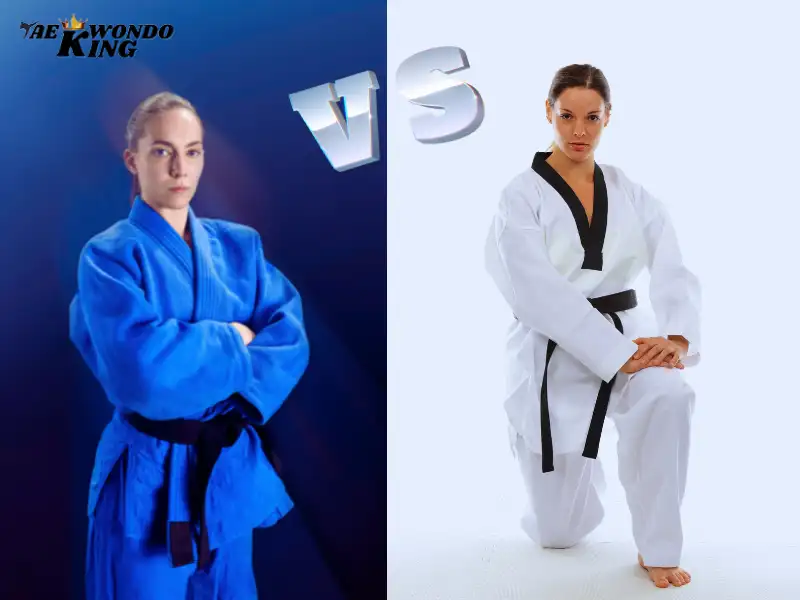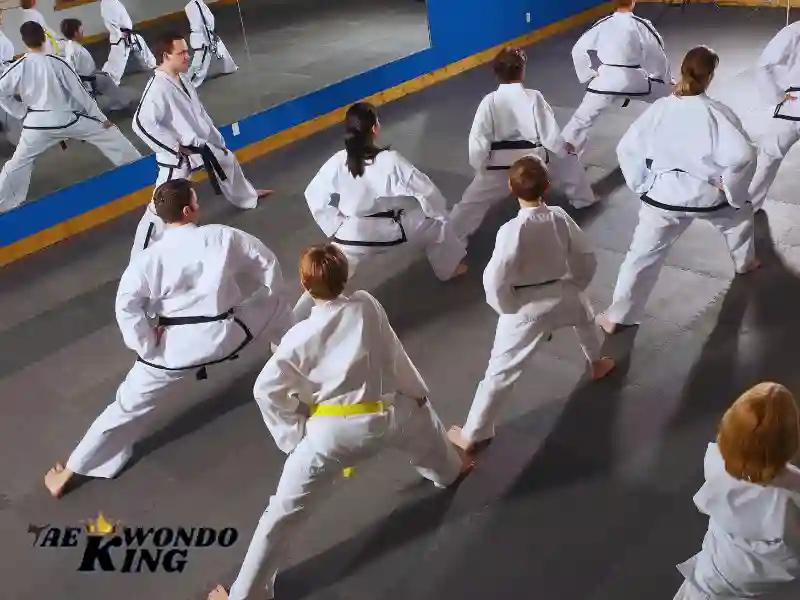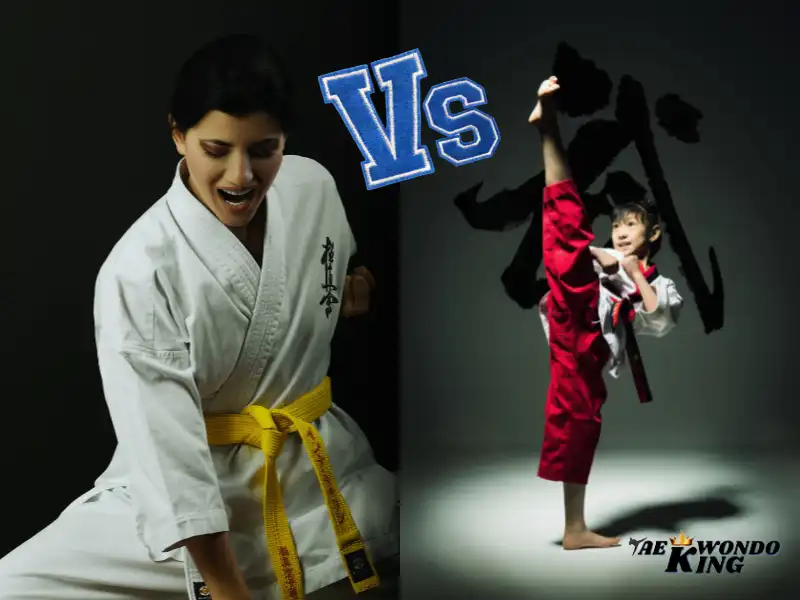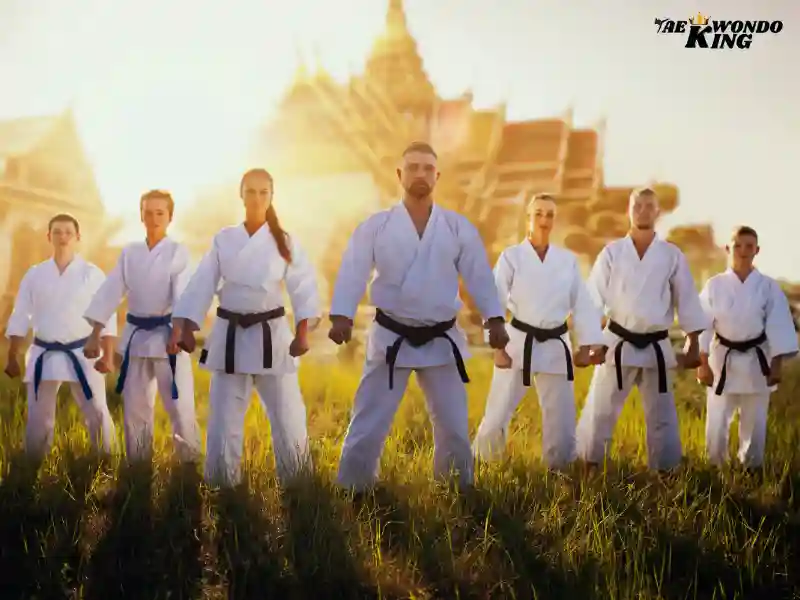
Karate, a traditional martial art rooted in Japan, offers a captivating journey of self-discovery, discipline, and physical prowess. As a beginner stepping onto the path of Karate, it’s essential to understand its origins, techniques, philosophies, and the transformative impact it can have on your life. In this comprehensive guide, we explore the world of Karate, providing you with insights, tips, and a roadmap to embark on your martial arts journey. Today we are talking about Beginner’s Guide to Karate.
Embarking on the journey of Karate as a beginner opens doors to self-discovery and mastery. This guide introduces you to the essence of Karate, a traditional Japanese martial art. Impact Martial arts Karate is more than physical techniques; it’s a philosophy that cultivates respect, discipline, and personal growth. Learn the fundamental techniques – punches, kicks, and blocks. These building blocks lay the foundation for your Karate journey. Dive into Kata practice, choreographed patterns that simulate combat scenarios. Katas, refine your technique, balance, and understanding of the application.
Progress through the belt ranks, symbolizing your growth and achievements. Each belt represents a step closer to mastery. Embrace Dojo etiquette, from bowing to respecting your instructors and peers. Understand Karate’s values – humility, Lifelong skills, integrity, and perseverance. These principles extend beyond the training mat. As a beginner, your Karate journey is a transformative experience encompassing physical and mental growth. It’s a path that shapes not only your martial prowess but also your character.
Origins and History of Karate
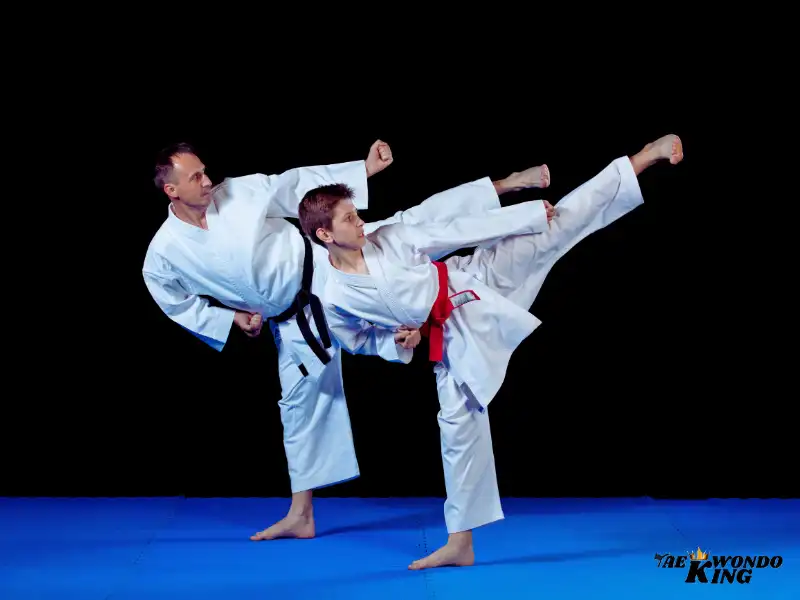
Karate’s origins trace back to the Ryukyu Kingdom, now Okinawa, Japan. A fusion of indigenous fighting styles and Chinese martial arts gave birth to Karate. Influences from Chinese techniques have led to its unique development. Over time, Okinawa’s martial artists refined and formalized these techniques into structured art. In the early 20th century, Karate was introduced to mainland Japan, where it gained popularity. Key figures like Gichin Funakoshi played crucial roles in its spread.
Today, The sport Karate is a globally practiced martial art, rooted in a rich history of cultural exchange and evolution. Karate history, Rules, and events information are provided by The World Karate Federation. The World Karate Federation (WKF) is the international governing body for karate. This is the website for karate beginners, but you can learn more about karate academy classes, and instructors.
The Philosophy of Karate
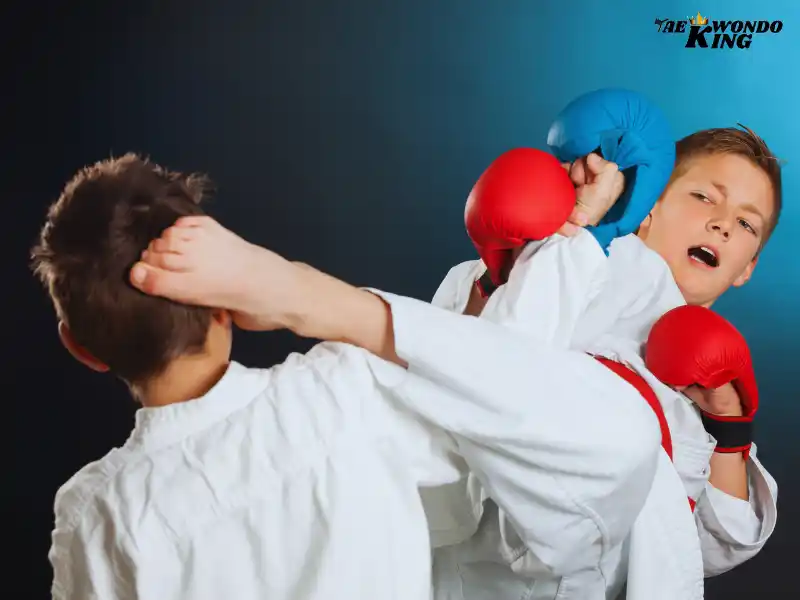
Beginner’s Guide to Karate and The Philosophy of Karate transcends physical techniques, delving into the realms of character, discipline, and personal growth. Rooted in respect, humility, and self-improvement, Karate is more than a martial art, it’s a way of life.
1. Respect (Rei): Central to Karate is respect for oneself, others, and the art itself. Bowing, a common practice, symbolizes this respect and creates an atmosphere of humility.
2. Discipline: Karate demands unwavering discipline, both in training and everyday life. This discipline fosters mental focus, patience, and a strong work ethic.
3. Self-Improvement: Karate is a journey of constant self-improvement. Each technique learned, and the challenges faced, contribute to personal growth.
4. Harmony: The harmony between mind and body is a core principle. Karate aims to synchronize physical techniques with mental clarity.
5. Perseverance: Karate teaches practitioners to endure and push past limits. The journey to mastery is marked by perseverance through challenges.
6. Integrity: Upholding integrity in both action and character is essential. Karate practitioners strive to do what’s right, even when it’s difficult.
7. Humility: Despite achievements, humility is key. Acknowledging one’s strengths while recognizing room for improvement is at the heart of Karate’s philosophy.
The philosophy of the sport of Karate extends beyond the Dojo, guiding practitioners toward a balanced and meaningful life. It’s a path of continuous growth, instilling virtues that enrich every aspect of one’s journey.
What are the different styles of Karate?
There are many Karate styles, each with its unique characteristics. Some popular styles include:
- Shotokan: Emphasizes powerful strikes and deep stances.
- Goju-Ryu: Focuses on a balance of hard and soft techniques.
- Kyokushin: Known for its full-contact sparring and emphasis on strength.
- Uechi-Ryu: Characterized by circular movements and breathing techniques.
What are the benefits of learning Karate?
Karate offers a multitude of benefits, including:
- Physical Fitness: Improves strength, flexibility, cardiovascular health, and coordination.
- Self-Defense: Provides practical skills for self-protection and situational awareness.
- Mental Discipline: Develops focus, concentration, and self-control.
- Confidence and Self-Esteem: Boosts confidence and a sense of accomplishment.
Beginner’s Guide to Karate Basic Techniques
Karate’s foundation rests upon its basic techniques, forming the core of this martial art’s prowess. We will provide a beginner’s guide to counting ten in karate. The first step to counting to at least ten in karate is to learn the Japanese numbers. Here are the Japanese numbers from one to ten: Ichi (one), Ni (two), San (three), Shi (or yon) (four), Go (five), Roku (six), Shichi (or nana) (seven), Hachi (eight), Kyu (nine), Ju (ten). Pronounce the numbers correctly. These techniques encompass strikes, blocks, and stances that lay the groundwork for further mastery.
1. Punches (Tsuki): Karate punches are precise and controlled, channeling power from the hips and legs. They range from straight punches to hook punches, each delivering targeted force.
2. Kicks (Keri): Karate kicks are renowned for their speed and precision. From front kicks to roundhouse kicks, they showcase a dynamic blend of power and agility.
3. Blocks (Uke): Karate blocks shield against attacks. Proper blocking techniques protect while setting the stage for counterattacks.
4. Stances (Dachi): Stances provide stability and mobility. From the front stance to the horse stance, each supports effective technique execution.
5. Breathing (Kiai): Proper breathing, exemplified by the Kiai, enhances technique effectiveness and energy flow.
These basic techniques are the building blocks upon which advanced skills are constructed. Practicing them with precision and discipline is the cornerstone of every Karate practitioner’s journey to mastery.
Kata: The Fight Technique of Karate
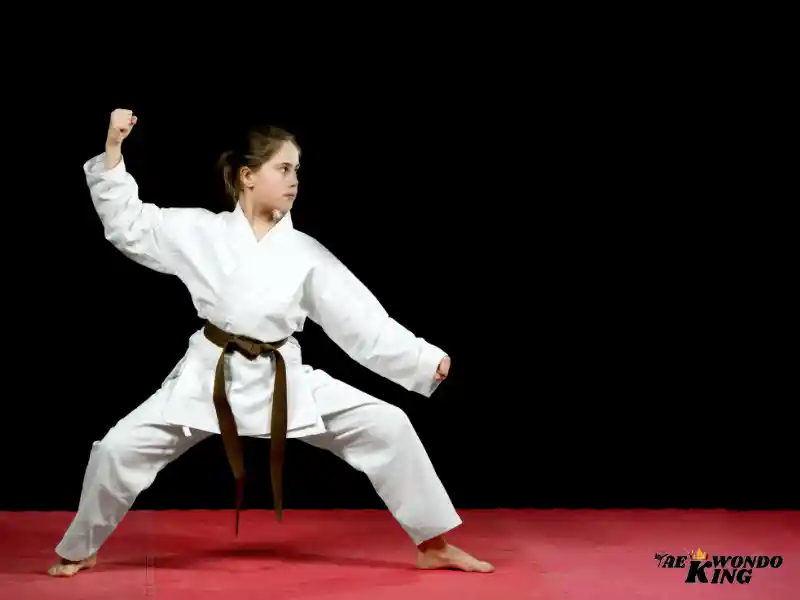
Kata, the intricate choreographed patterns of movement in Karate, are more than just a sequence of techniques; they embody the essence of the art. A Kata is a simulated battle, allowing practitioners to practice techniques in a systematic and controlled manner. Each Kata has its unique set of movements, strikes, and blocks, showcasing the application of Karate techniques in various scenarios.
Katas serve as a bridge between fundamentals and practical application. They help practitioners refine their stances, timing, and breathing while deepening their understanding of the art’s philosophy. Through consistent practice, practitioners internalize the movements, enabling them to execute techniques seamlessly in real combat situations.
Beginner’s Guide to Karate and Kata practice offers multiple benefits, from enhancing muscle memory to fostering mental focus. It’s a journey that unveils the nuances of Karate techniques while cultivating discipline, concentration, and an appreciation of the art’s intricacies. Just as a painter refines each brushstroke, a Karate practitioner hones their techniques through Kata, creating a harmonious fusion of body and mind.
Beginner’s Guide to Karate Belts and Ranks

Karate, like many martial arts, employs a belt system to signify a practitioner’s level of skill and progress. This hierarchy of Karate belts and ranks not only serves as a visual representation of a student’s journey but also reflects their dedication and commitment to the art.
1. White Belt: The starting point, symbolizing purity and a blank slate. It represents the beginning of the martial arts journey.
2. Yellow Belt: As a beginner gains familiarity with basic techniques and forms, the yellow belt signifies the first rays of sunlight breaking through.
3. Orange Belt: Representing further growth and understanding, the orange belt denotes the progression of skills.
4. Green Belt: Like a plant growing upwards, the green belt signifies development and the deepening of knowledge.
5. Blue Belt: At this stage, the practitioner’s skills are becoming more refined, much like the deepening hue of the sky.
6. Purple Belt: Symbolizing a transition, the purple belt indicates an intermediate level of proficiency.
7. Brown Belt: As skills continue to advance, the brown belt conveys a sense of mastery over the basics.
8. Black Belt: The pinnacle of achievement. The black belt signifies not just technical proficiency but also a deep understanding of Karate’s principles and philosophy.
9. Dan Ranks: Beyond the black belt, practitioners can achieve various Dan ranks, representing further mastery and expertise.
Each belt is earned through dedicated training, consistent practice, and a thorough understanding of the art. Karate belts and ranks are not just about physical skill; they reflect personal growth, resilience, and an unwavering commitment to the path of martial arts mastery.
Beginner’s Guide to Karate Benefits
Karate isn’t just about kicks and punches; it offers a wealth of benefits that extend beyond the training mat. Engaging in Karate brings about a holistic transformation that impacts both body and mind.
1. Physical Fitness: Karate training enhances cardiovascular health, strength, flexibility, and coordination. The dynamic movements and techniques contribute to a well-rounded fitness regimen.
2. Self-Defense Skills: Learning Karate equips practitioners with practical self-defense techniques. The ability to protect oneself and others is a valuable life skill.
3. Mental Discipline: Karate cultivates mental focus, concentration, and resilience. The practice of techniques and katas requires mental clarity and mindfulness.
4. Character Development: Karate’s philosophy emphasizes values such as respect, humility, and integrity. Practitioners learn to apply these principles in their daily lives.
5. Stress Relief: Engaging in physical activity and concentrating on technique provide an effective outlet for stress and tension.
6. Confidence Boost: As skills improve, so does self-confidence. The sense of achievement gained from mastering techniques and progressing through belt ranks boosts self-esteem.
7. Social Interaction: Joining a Karate dojo fosters connections with like-minded individuals, creating a supportive community.
8. Goal Setting: Karate encourages setting and achieving goals, promoting a sense of accomplishment and motivation.
9. Focus on Mind-Body Connection: Karate emphasizes the synergy between mind and body, promoting holistic well-being.
10. Lifelong Learning: Karate is a journey of continuous learning, offering opportunities for growth at any age.
Incorporating Karate into your lifestyle isn’t just about learning martial techniques; it’s about adopting a mindset that enhances every aspect of your life.
How to achieve a black belt in Karate?
To achieve a black belt in Karate, you will need to follow these steps:
1. Find a reputable Karate school or dojo and enroll in regular classes. Make sure the instructors are experienced and qualified.
2. Dedicate yourself to consistent training and practice. Attend classes regularly and put in extra practice outside of class.
3. Learn and master all the techniques and forms required for each belt level. This includes strikes, blocks, kicks, and combinations.
4. Show discipline, focus, and dedication to your training. Karate is not just about physical skills but also about mental and emotional strength.
5. Progress through the belt levels, starting from the white belt and working your way up. Each belt level has its requirements, which may include demonstrations, tests, and evaluations.
6. Participate in tournaments and competitions to gain experience and improve your skills. This will also allow you to showcase your abilities.
7. Develop good character traits such as respect, humility, and perseverance. Karate is not just about fighting but also about personal growth and self-improvement.
8. Pass the black belt test, which typically involves a rigorous examination of your skills, knowledge, and character. This may include physical demonstrations, written exams, and interviews.
Remember, achieving a black belt in Karate takes time, effort, and dedication. It is a journey of continuous learning and self-improvement.
How to achieve proper form in Karate techniques?
To achieve proper form in Karate techniques, it is important to focus on the following:
1. Stance: Maintain a balanced and stable stance with proper alignment of the feet, knees, and hips.
2. Posture: Keep an upright posture with a straight back and relaxed shoulders.
3. Body positioning: Ensure proper body positioning for each technique, such as maintaining the correct angles and rotations.
4. Breathing: Coordinate your movements with proper breathing, exhaling during strikes and inhaling during recovery.
5. Focus: Concentrate on the target or opponent and maintain focus throughout the execution of the technique.
6. Tightness and relaxation: Find the balance between being tight and generating power and being relaxed to allow for speed and fluidity in movements.
7. Practice: Regular practice and repetition of techniques under the guidance of a qualified instructor will help refine and improve your form.
How to achieve balance and stability in Karate?
To achieve balance and stability in Karate, it is important to focus on the following:
1. Core Strength: Developing a strong core through exercises such as planks, sit-ups, and leg raises will help with overall stability and balance.
2. Proper Stance: Maintain a low, stable stance with your feet shoulder-width apart and slightly bent knees. This will provide a solid foundation for balance.
3. Weight Distribution: Distribute your weight evenly between both feet, with a slight bias towards the balls of your feet. Avoid leaning too far forward or backward.
4. Concentration: Focus on your breathing and the alignment of your body. This will help you maintain control and stability during movements.
5. Practice Balancing Exercises: Incorporate exercises like one-legged stands, balance boards, and heel-to-toe walks to improve your proprioception and stability.
6. Slow and Controlled Movements: Start with slow, controlled movements to build a strong foundation before progressing to faster techniques. This will help develop better balance and stability.
7. Flexibility and Range of Motion: Regular stretching and flexibility exercises will improve your range of motion, allowing for smoother and more stable movements.
Remember, achieving balance and stability in Karate takes time and practice. It is important to be patient, consistent, and focused on improving these aspects of your training.
How to achieve focus and concentration in Karate?
To achieve focus and concentration in Karate, you can follow these tips:
1. Clear your mind: Before starting your training, take a few moments to clear your mind of any distractions or worries. Mental clarity is important for focus.
2. Set clear goals: Have specific goals in mind for each training session or technique you are working on. This will help you stay focused and motivated.
3. Visualize success: Imagine yourself executing techniques perfectly and achieving your goals. Visualizing success can help improve your focus and concentration during training.
4. Practice mindfulness: Pay attention to the present moment and be fully engaged in your training. Avoid thinking about past mistakes or future worries.
5. Control your breathing: Deep breathing exercises can help calm your mind and improve focus. Take slow, deep breaths to stay centered and focused during training.
6. Eliminate distractions: Minimize external distractions such as noise, interruptions, or unnecessary conversations during your training sessions.
7. Practice regularly: Consistent practice is key to improving focus and concentration. Make sure to dedicate regular time to your Karate training.
8. Seek guidance from your instructor: Your Karate instructor can provide valuable guidance and techniques to help improve your focus and concentration. Don’t hesitate to ask for their advice.
Remember, achieving focus and concentration in Karate is a continuous process that requires patience and dedication. With practice, you can enhance your mental focus and performance in your martial arts training.
How to achieve self-discipline and perseverance in Karate?
To achieve self-discipline and perseverance in Karate, you can follow these steps:
1. Set clear goals: Establish specific and achievable goals for your Karate training. This will help you stay focused and motivated.
2. Create a routine: Develop a consistent training schedule and stick to it. Regular practice will build discipline and perseverance.
3. Find a supportive community: Surround yourself with like-minded individuals who share your passion for Karate. Training with others can provide motivation and accountability.
4. Stay committed: Remember why you started practicing Karate and keep that motivation alive. Remind yourself of the benefits and personal growth you can achieve through perseverance.
5. Embrace challenges: Don’t shy away from difficult techniques or training sessions. Push yourself outside of your comfort zone to develop mental and physical resilience.
6. Stay positive: Maintain a positive mindset, even in the face of setbacks or obstacles. Embrace failures as opportunities to learn and grow.
7. Practice self-reflection: Regularly evaluate your progress and identify areas for improvement. Adjust your training methods and goals accordingly.
With consistent effort and dedication, you can develop self-discipline and perseverance in your Karate practice.
Starting Your Karate Journey
Here’s a step-by-step guide to embarking on your Karate journey:
- Research: Find reputable dojos or training centers in your area. Read reviews, visit dojos, and talk to instructors.
- Choose the Right Dojo: Select a dojo that aligns with your values and offers a structured curriculum for beginners.
- Attire: You’ll need a Karate gi (uniform) for training. Most dojos have specific requirements for uniforms.
- Training Schedule: Enroll in a beginner’s class and commit to a consistent training schedule.
- Learn Basics: Focus on learning basic techniques, stances, and movements. Don’t rush; mastery takes time.
- Practice Regularly: Repetition is key. Practice at home and attend beginner classes regularly to reinforce your skills.
- Set Goals: Set achievable goals, whether it’s mastering a specific technique or advancing to the next belt rank.
- Cultivate Discipline: Embrace the discipline of Karate on and off the mat. Apply its principles in your daily life.
- Stay Humble: Humility is at the core of Karate. Embrace mistakes as learning opportunities and respect your instructors and peers.
- Enjoy the Journey: Your journey in Karate is not just about reaching a destination; it’s about the growth and transformation you experience along the way.
In conclusion,
As a beginner, entering the world of Karate is embarking on a transformative adventure. Beyond physical techniques, Karate instills a mindset of discipline, respect, and continuous self-improvement. The journey may be challenging, but the rewards, both in terms of personal development and martial skill, are immeasurable. With the right mindset, dedication, and guidance from experienced instructors, you’ll find yourself on a path of mastery that extends far beyond the Dojo walls. Embrace the art of Karate, and let it shape your journey toward becoming a skilled martial artist and a better version of yourself.
FAQs
Is Karate good for kids?
Absolutely! Karate instills valuable discipline, focus, and respect in children. It also promotes physical fitness and coordination in a fun and engaging way. Many schools offer programs specifically designed for children.
Is Karate expensive?
Costs can vary depending on the school location and program structure. Some schools offer introductory classes or trial periods.
Is Karate good for self-defense?
Karate teaches valuable self-defense principles like awareness, blocking techniques, and powerful strikes. However, it’s important to remember that self-defense effectiveness depends on various factors, including your skill level and the situation.
What should I wear to my first Karate class?
Most Karate schools recommend comfortable clothing like sweatpants and a T-shirt. Some might have specific uniform requirements for beginners.
What should I expect in my first Karate class?
Your first class will likely focus on basic etiquette, terminology, and warm-up exercises. You’ll start learning fundamental stances, punches, blocks, and kicks.
What equipment do I need for Karate?
For beginners, a gi might not be necessary right away. Check with your school about their specific requirements. Mouthguards and protective gear might be needed for sparring classes in some styles.
How long does it take to get a black belt in Karate?
The time to black belt varies depending on the style, training frequency, and individual progress. It typically takes several years of dedicated training.
Do I need to be strong or in good shape to start Karate?
You don’t need to be in peak physical condition to begin. Karate itself will help you improve your strength, flexibility, and overall fitness level.
Where can I find a Karate school near me?
You can search online directories or ask friends or family for recommendations. Look for schools with qualified instructors, a positive learning environment, and programs suitable for beginners.
What should I look for in a Karate school?
Look for a reputable school with qualified instructors who emphasize proper technique and safety. Consider factors like class schedule, location, and student reviews to find a good fit for you.

Founder, Owner, and CEO of TaekwondoKing.
He is one of the top 100 martial artists in the World and among the top 20 referees in Bangladesh.
Ehatasamul Alom is an esteemed Kukkiwon Certified Taekwondo 3rd Dan Black Belt with over 15 years of experience in this dynamic martial art. Born in Rajshahi, Bangladesh, Ehatasamul’s journey with Taekwondo began at the tender age of seven. His passion led him to compete at national and international levels, where he has bagged numerous awards and honors. He is also a member of the Taekwondo National Referee Panel.
With a Bachelor’s degree in Sports Science from the prestigious Rajshahi University, Ehatasamul has a deep understanding of the technical and scientific aspects of martial arts and some other martial arts.
In 2022, Ehatasamul created the “TaekwondoKing.com” to share his knowledge, Free Resources, Values, and Real experiences. His articles focus on Taekwondo training techniques, competition strategies, Sport Products Reviews, and the art’s rich history and philosophy. He also writes about the importance of mental fortitude and discipline, key aspects of his teaching philosophy. He has already launched many sports, Taekwondo, and health-related Free online tools. His goal is to inspire both beginners and seasoned practitioners worldwide through insightful and engaging content.
If you need any help, contact Ehatasamul Alom at any time.


